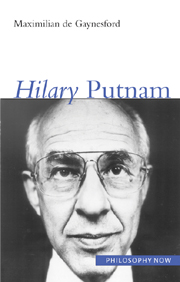11 - Reality
from Part IV - Content: later perspectives
Summary
I begin to draw a figure and the world is looped in it, and I myself am outside the loop; which I now join – so – and seal up, and make entire. The world is entire, and I am outside of it, crying, “Oh save me, from being blown for ever outside the loop of time!”
Virginia Woolf, The Waves (1931: 21–2)What Woolf describes here as the plight of novelists with certain kinds of realist or naturalist programme, Putnam recognized as the predicament foisted on certain kinds of philosopher, and, specifically, on those who would espouse the kinds of view endorsed by Putnam himself in the first half of his career.
Suppose one is setting out to describe everything that is, “the world”, whether as an artist or as a philosopher or as a scientist. There are ways of doing so that inevitably leave one's own self, or significant aspects of oneself, out of the picture. Recognizing that one is outside one's own representation of the world can be a terrifying experience for anyone who has a hand in it: the human being who thinks of the world in a certain way, for example, or the artist who portrays it in writing, in painting, in music. For it can seem that this really is the way of things; that the world, in so far as one can recognize it as such, is indeed removed, lost, uncontactable.
- Type
- Chapter
- Information
- Hilary Putnam , pp. 128 - 136Publisher: Acumen PublishingPrint publication year: 2006

